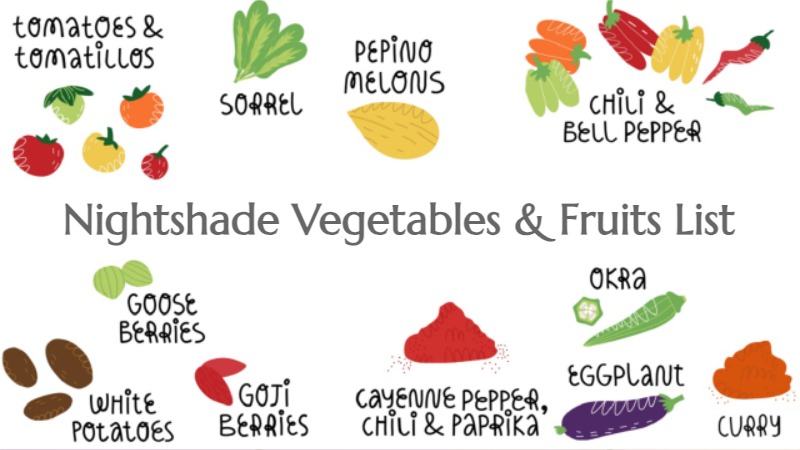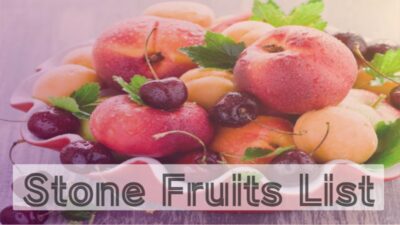
Nightshade vegetables and fruits belong to the Solanaceae family of plants and are known for containing alkaloids that can be toxic to some individuals. Some species are toxic, including the belladonna plant, which is also called deadly nightshade. However, humans commonly cultivate and eat other species of these nightshade vegetables regularly without any issues.
Certain nightshade vegetables can be high sources of nutrients, including vitamins, minerals, and fiber. Eating a varied diet rich in vitamins and minerals can have a powerful effect on a person’s health and improve the symptoms of chronic conditions, such as rheumatoid arthritis.
Common Nightshade Vegetables & Fruits List
They are called nightshades because some of these plants have a tendency to thrive in shady areas and produce fruits or vegetables that are toxic or inedible. However, many nightshade vegetables are widely consumed and safe for human consumption. Here is a list of commonly recognized nightshade vegetables:-
- Ashwagandha
- Bush Tomatoes (Native to Australia)
- Tomatoes
- Potatoes (excluding sweet potatoes and yams)
- Peppers (bell peppers, chili peppers, jalapenos, etc.)
- Eggplant (aubergine)
- Cocona
- Curry Powder
- Garam Masala Spice
- Tomatillos
- Paprika (derived from ground peppers)
- Cayenne pepper
- Capsicum
- Tabasco sauce (made from Tabasco peppers)
- Pimentos (often found in olives)
- Goji berries (also known as wolfberries)
- Hot Sauce
- Kutjera
- Steak Seasoning
- Cape gooseberries (also known as ground cherries or physalis)
- Pepino melon (also known as sweet cucumber or mellowfruit)
- Tamarillos (also known as tree tomatoes)
- Garden huckleberry (a relative of tomatoes and eggplants)
- Naranjillas (also known as lulo or little orange)
- Tobacco
- Mandrakes
Best Ways to Eat Nightshade Vegetables
Since there are several different nightshade fruits and vegetables, there are multitudes of ways to cook them. If you want to learn how to cook nightshades, popular dishes that usually contain them include:-
- Salsa
- Bruschetta
- Tomato soup
- Gazpacho
- Pasta with tomato sauce
- Baked potatoes
- French fries
- Mashed potatoes
- Potato salad
- Hash browns
- Scalloped potatoes
- Stuffed bell peppers
- Baba ghanoush
- Eggplant parmesan
Nonnightshade Vegetables
If a person wishes to eliminate nightshades from their diet, they can replace them with other nonnightshade vegetables, such as:
- Sweet potatoes
- Yams
- Cauliflower
- Mushrooms
Allergy to Nightshade Vegetables
Allergies to nightshade vegetables, such as potatoes and tomatoes, are uncommon but possible. However, some people may be sensitive or intolerant to certain foods rather than allergic. Symptoms of food intolerance include:-
- Flushed skin
- A raised red, itchy rash on lighter skin
- A raised, itchy rash on darker skin
- Eczema flares
- Abdominal pain
- Diarrhea
- Bloating
- Stomach cramps
- Constipation
- Runny nose
- Breathing difficulties
- Wheezing
- Headaches palpitations
Reactions to nightshade vegetables can vary from person to person and not everyone is sensitive to them. If you have concerns or suspect you may have a sensitivity, it is recommended to consult with a healthcare professional.










